-
 Bitcoin
Bitcoin $83,407.2371
-1.63% -
 Ethereum
Ethereum $1,823.1395
-3.06% -
 Tether USDt
Tether USDt $0.9997
-0.02% -
 XRP
XRP $2.0473
-2.23% -
 BNB
BNB $600.1100
-0.49% -
 Solana
Solana $119.7021
-3.88% -
 USDC
USDC $0.9998
-0.01% -
 Dogecoin
Dogecoin $0.1648
-3.39% -
 Cardano
Cardano $0.6519
-2.39% -
 TRON
TRON $0.2368
-0.66% -
 Toncoin
Toncoin $3.8129
-4.99% -
 UNUS SED LEO
UNUS SED LEO $9.3898
-0.23% -
 Chainlink
Chainlink $13.1549
-4.15% -
 Stellar
Stellar $0.2637
-1.07% -
 Sui
Sui $2.4035
1.65% -
 Avalanche
Avalanche $18.5674
-3.45% -
 Shiba Inu
Shiba Inu $0.0...01232
-0.30% -
 Hedera
Hedera $0.1654
0.03% -
 Polkadot
Polkadot $4.0578
-0.51% -
 Litecoin
Litecoin $82.9613
0.22% -
 MANTRA
MANTRA $6.3104
1.76% -
 Bitcoin Cash
Bitcoin Cash $301.4958
-1.14% -
 Bitget Token
Bitget Token $4.5444
-0.98% -
 Dai
Dai $0.9999
-0.01% -
 Ethena USDe
Ethena USDe $1.0000
0.02% -
 Pi
Pi $0.6681
-3.26% -
 Hyperliquid
Hyperliquid $12.3441
-5.68% -
 Monero
Monero $216.6690
-0.88% -
 Uniswap
Uniswap $5.9832
-2.69% -
 Aptos
Aptos $5.2233
-0.17%
What is the difference between hard fork and soft fork of blockchain?
Hard forks permanently split a blockchain, creating a new cryptocurrency due to backward incompatibility, while soft forks are backward-compatible upgrades improving the existing chain without splitting it. Examples include Bitcoin Cash (hard fork) and SegWit (soft fork).
Mar 18, 2025 at 03:42 am
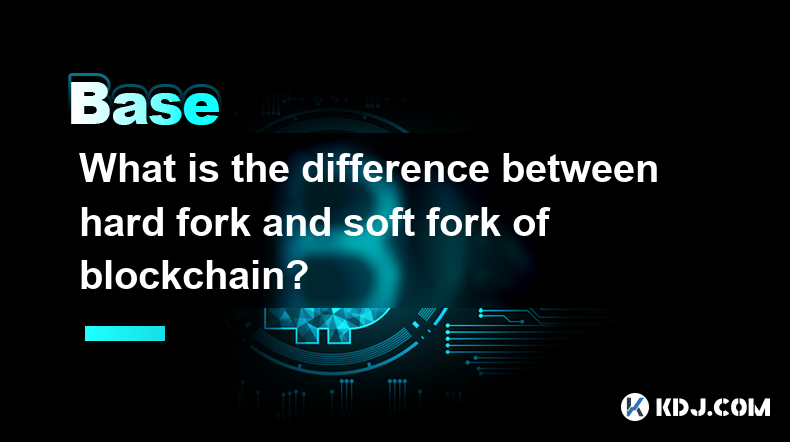
Key Points:
- Hard Forks: Create a permanent divergence in the blockchain, resulting in two separate cryptocurrencies. Backward incompatibility is key. Requires all nodes to upgrade.
- Soft Forks: Maintain backward compatibility. Old nodes can still operate alongside upgraded nodes, but may have limited functionality. Easier to implement than hard forks.
- Activation Mechanisms: Different methods are used to activate both, involving miners, node operators, and community consensus.
- Impact on Cryptocurrencies: Hard forks can create new cryptocurrencies, while soft forks typically improve the existing one without splitting the chain.
- Examples: Bitcoin Cash (hard fork of Bitcoin), SegWit (soft fork of Bitcoin).
What is the difference between hard fork and soft fork of blockchain?
The terms "hard fork" and "soft fork" describe two distinct ways to upgrade a blockchain. Understanding their differences is crucial for navigating the complexities of the cryptocurrency landscape. Both involve changes to the blockchain's protocol, but they differ significantly in their impact and implementation.
Hard Forks: A Permanent Split
A hard fork is a fundamental change to the blockchain's protocol that creates incompatibility between the old and new versions. This means that nodes running the old software cannot communicate with nodes running the new software, resulting in a permanent split of the blockchain into two separate chains. This effectively creates a new cryptocurrency. The new chain retains the history up to the point of the fork, but diverges thereafter. Think of it like a road splitting into two separate paths.
To successfully implement a hard fork, a significant portion of the network's miners and nodes must upgrade to the new software. If not enough miners adopt the new rules, the hard fork may fail, leaving the old chain intact. The success depends heavily on community support and adoption.
Soft Forks: Backward Compatibility
In contrast, a soft fork is a backward-compatible upgrade. Nodes running the old software can still process transactions validated by the new software. Essentially, the new rules are simply added to the existing ones. Nodes running the old software might not understand the new features, but they will still accept the transactions valid under the old rules. This ensures that the blockchain remains unified.
Soft forks are generally easier to implement than hard forks because they don't require a complete network upgrade. They are often used to introduce smaller improvements or bug fixes to the existing protocol. It's like adding a new lane to an existing road – the old road is still usable, but there's a new option available.
Activation Mechanisms: Reaching Consensus
The activation of both hard and soft forks relies on reaching a consensus within the cryptocurrency community. Several mechanisms are employed, depending on the specific cryptocurrency and its development team.
- Miner Activation: Miners play a crucial role, especially in proof-of-work cryptocurrencies. They must upgrade their mining software to support the new rules. A sufficient percentage of hash power supporting the upgrade is usually required for successful activation.
- Node Activation: For all cryptocurrencies, node operators need to update their software. A certain threshold of nodes running the updated software is often necessary to ensure the fork's success.
- Community Consensus: Successful forks generally require broad community support. This involves discussions, debates, and agreements among developers, users, and miners regarding the proposed changes. This process can be lengthy and complex.
Impact on Cryptocurrencies: New Coins vs. Upgrades
Hard forks can lead to the creation of entirely new cryptocurrencies. The original cryptocurrency continues to exist alongside the new one, each with its own distinct blockchain and potentially different features or functionalities. Examples include Bitcoin Cash, which forked from Bitcoin, and Ethereum Classic, which originated from an Ethereum hard fork.
Soft forks, on the other hand, don't typically create new cryptocurrencies. They improve the existing one by adding new features or fixing bugs without splitting the chain. A prime example is SegWit (Segregated Witness), a soft fork implemented on the Bitcoin network to improve scalability and transaction efficiency.
Frequently Asked Questions:
Q: Can a hard fork be reversed?
A: No, a hard fork cannot be reversed. Once a hard fork occurs, the two chains exist independently, with no mechanism to merge them back together.
Q: Are soft forks always successful?
A: While soft forks are generally easier to implement than hard forks, they can still fail if not enough nodes upgrade their software.
Q: What are the benefits of a hard fork?
A: Hard forks allow for significant changes to the blockchain's protocol, which can address major limitations or introduce entirely new functionalities. They also can lead to the creation of new cryptocurrencies with unique properties.
Q: What are the risks associated with hard forks?
A: Hard forks can create uncertainty and confusion within the cryptocurrency community. They also carry the risk of failure if not enough miners and nodes upgrade to the new software.
Q: How do I participate in a hard fork or soft fork?
A: Participation depends on whether you are a miner, node operator, or simply a user. Miners must upgrade their software. Node operators must do the same. Users may need to take action depending on the specifics of the fork, such as moving their cryptocurrency to a supported wallet. Staying informed about the fork's specifics is crucial.
Q: What is the role of community consensus in forks?
A: Community consensus is vital for the success of both hard and soft forks. Wide agreement on the proposed changes ensures smoother implementation and wider adoption, reducing the risk of a failed fork. Without broad support, a fork can be contentious and even lead to a fractured community.
Disclaimer:info@kdj.com
The information provided is not trading advice. kdj.com does not assume any responsibility for any investments made based on the information provided in this article. Cryptocurrencies are highly volatile and it is highly recommended that you invest with caution after thorough research!
If you believe that the content used on this website infringes your copyright, please contact us immediately (info@kdj.com) and we will delete it promptly.
- RUVI AI Revolutionizes AI Accessibility with Blockchain Power
- 2025-04-03 11:15:12
- Fidelity Investments Introduces an IRA That Permits Investors to Buy Bitcoin, Ether, and Litecoin
- 2025-04-03 11:15:12
- Whale Alert Detects a Large Bitcoin Transfer Involving 1050 BTC from Binance to an Unknown Wallet
- 2025-04-03 11:10:12
- Democratic Lawmakers Ask US Securities Regulator to Preserve Records of President Trump's Crypto Venture
- 2025-04-03 11:10:12
- Curve Finance Notches Record-Breaking Trading Volumes of Nearly $35 Billion in the First Quarter of 2025
- 2025-04-03 11:05:13
- Coinlist restarts US operations after five-year hiatus
- 2025-04-03 11:05:13
Related knowledge
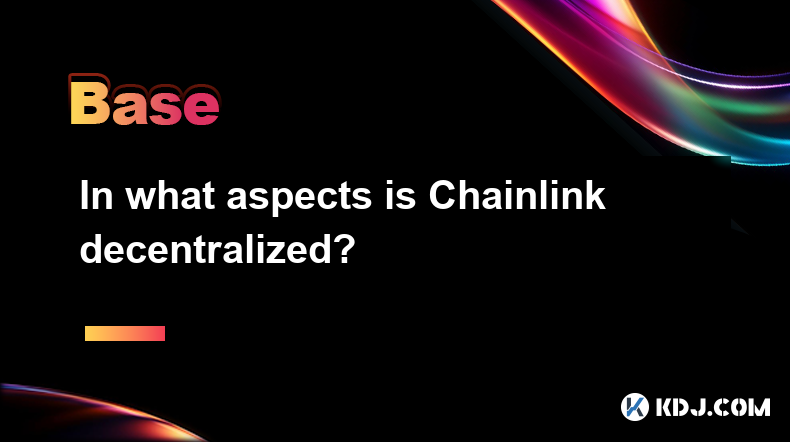
In what aspects is Chainlink decentralized?
Apr 02,2025 at 05:49pm
Chainlink is a decentralized oracle network that plays a crucial role in connecting smart contracts on blockchain networks with real-world data. Its decentralization is reflected in multiple aspects, ensuring the network's security, reliability, and integrity. This article delves into the various ways Chainlink achieves decentralization, including its n...

How does Chainlink connect smart contracts with real-world data?
Apr 02,2025 at 03:56pm
Chainlink is a decentralized oracle network that plays a crucial role in connecting smart contracts on blockchain platforms with real-world data. Smart contracts are self-executing contracts with the terms of the agreement directly written into code, but they can only interact with on-chain data. To access real-world data, such as stock prices, weather ...
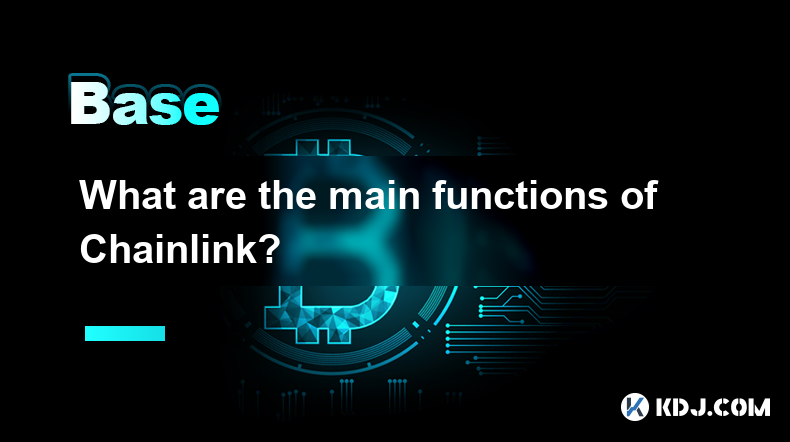
What are the main functions of Chainlink?
Apr 02,2025 at 11:49pm
Chainlink is a decentralized oracle network that plays a crucial role in connecting smart contracts with real-world data and external APIs. The primary function of Chainlink is to facilitate the seamless integration of off-chain data into on-chain smart contracts, enabling them to execute based on real-world events and information. This integration is v...

How does Chainlink work?
Apr 03,2025 at 01:50am
Chainlink is a decentralized oracle network that connects smart contracts with real-world data and external APIs. It plays a crucial role in the blockchain ecosystem by enabling smart contracts to interact with data outside their native blockchain environment. This connectivity is essential for smart contracts to execute based on real-world events and d...
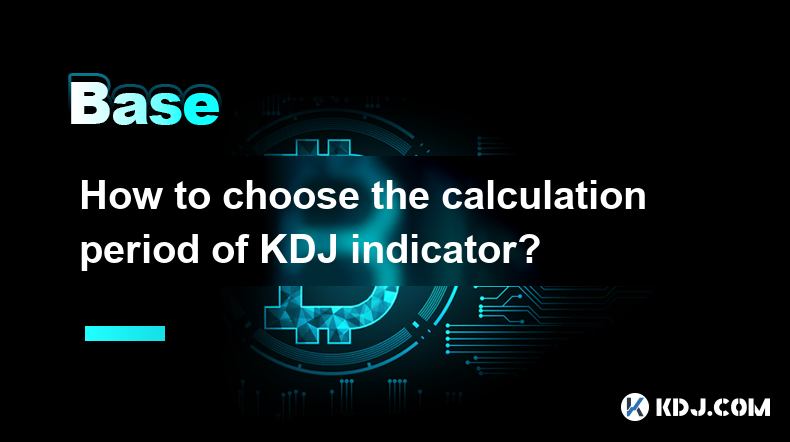
How to choose the calculation period of KDJ indicator?
Apr 02,2025 at 01:00pm
The KDJ indicator, also known as the Stochastic Oscillator, is a popular technical analysis tool used by cryptocurrency traders to identify potential buy and sell signals. The calculation period of the KDJ indicator is crucial in determining its effectiveness in predicting market trends. In this article, we will explore the factors to consider when choo...
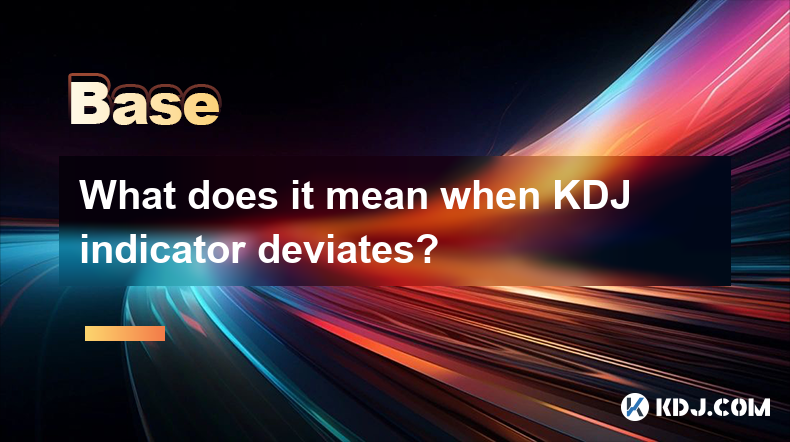
What does it mean when KDJ indicator deviates?
Apr 01,2025 at 03:08pm
The KDJ indicator, also known as the Stochastic Oscillator, is a popular technical analysis tool used in the cryptocurrency market to predict price movements. When the KDJ indicator deviates, it means that the current price of a cryptocurrency is moving away from its typical range, as indicated by the KDJ lines. This deviation can signal potential trend...

In what aspects is Chainlink decentralized?
Apr 02,2025 at 05:49pm
Chainlink is a decentralized oracle network that plays a crucial role in connecting smart contracts on blockchain networks with real-world data. Its decentralization is reflected in multiple aspects, ensuring the network's security, reliability, and integrity. This article delves into the various ways Chainlink achieves decentralization, including its n...

How does Chainlink connect smart contracts with real-world data?
Apr 02,2025 at 03:56pm
Chainlink is a decentralized oracle network that plays a crucial role in connecting smart contracts on blockchain platforms with real-world data. Smart contracts are self-executing contracts with the terms of the agreement directly written into code, but they can only interact with on-chain data. To access real-world data, such as stock prices, weather ...

What are the main functions of Chainlink?
Apr 02,2025 at 11:49pm
Chainlink is a decentralized oracle network that plays a crucial role in connecting smart contracts with real-world data and external APIs. The primary function of Chainlink is to facilitate the seamless integration of off-chain data into on-chain smart contracts, enabling them to execute based on real-world events and information. This integration is v...

How does Chainlink work?
Apr 03,2025 at 01:50am
Chainlink is a decentralized oracle network that connects smart contracts with real-world data and external APIs. It plays a crucial role in the blockchain ecosystem by enabling smart contracts to interact with data outside their native blockchain environment. This connectivity is essential for smart contracts to execute based on real-world events and d...

How to choose the calculation period of KDJ indicator?
Apr 02,2025 at 01:00pm
The KDJ indicator, also known as the Stochastic Oscillator, is a popular technical analysis tool used by cryptocurrency traders to identify potential buy and sell signals. The calculation period of the KDJ indicator is crucial in determining its effectiveness in predicting market trends. In this article, we will explore the factors to consider when choo...

What does it mean when KDJ indicator deviates?
Apr 01,2025 at 03:08pm
The KDJ indicator, also known as the Stochastic Oscillator, is a popular technical analysis tool used in the cryptocurrency market to predict price movements. When the KDJ indicator deviates, it means that the current price of a cryptocurrency is moving away from its typical range, as indicated by the KDJ lines. This deviation can signal potential trend...
See all articles
























































































